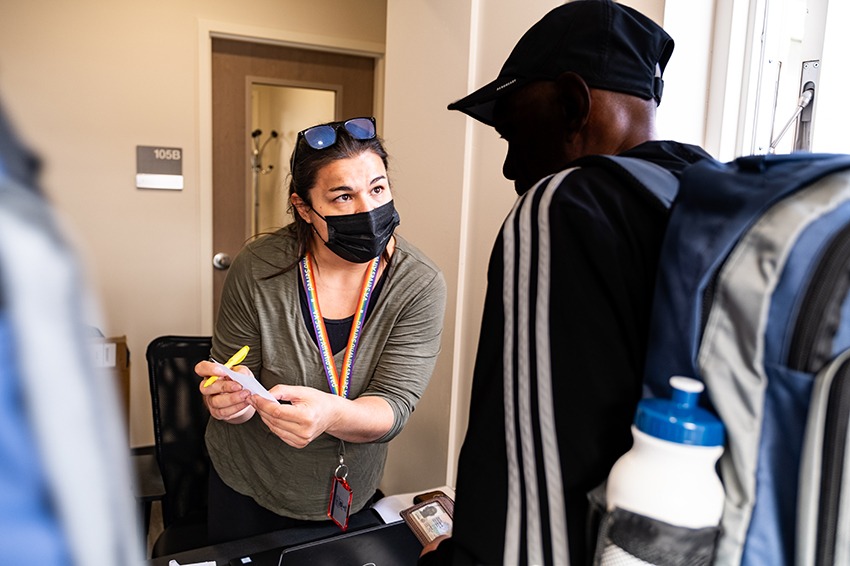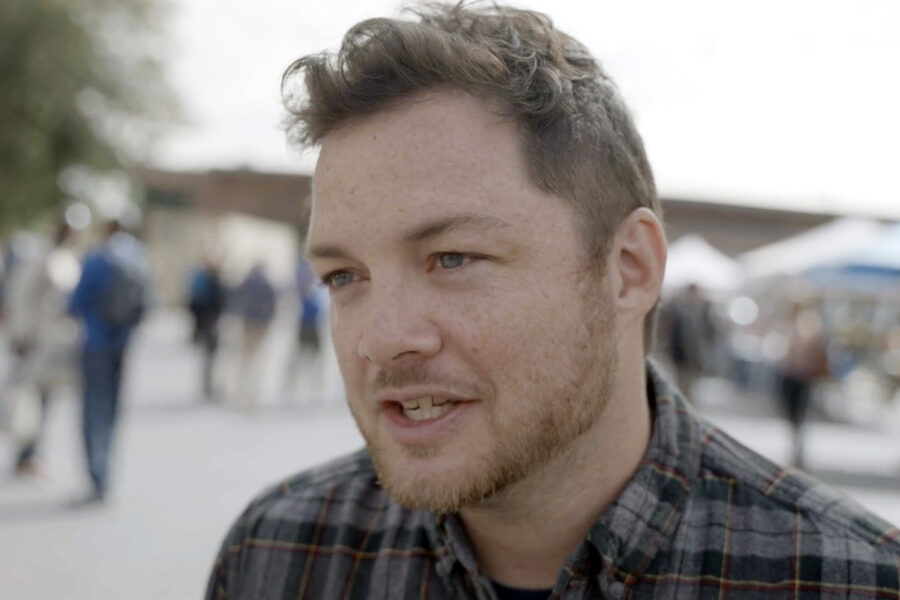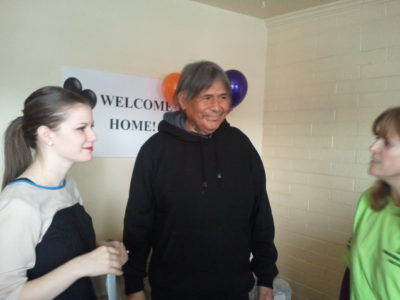To understand the progress that’s happening in Metro Denver around veteran homelessness, first you must picture a bus.
Yes, a bus. Picture scores of service providers and organizations working on veteran homelessness all on a bus.
As Ian Fletcher explains it, that’s how Denver used to approach homelessness. All the organizations were on this bus together headed toward a common goal: a measurable end to homelessness.
But it was a bit chaotic. As Fletcher explains, not everyone wanted to be on the bus. Not everyone was ready to move at the same speed or even in the same direction. It wasn’t working.
Part of the challenge is that Metro Denver is so big that homelessness looks different in different parts of it. Some sections of the region had fewer people experiencing homelessness — and fewer resources to address it. It didn’t make sense for them to take the same approach. But, they had to coordinate, because homelessness isn’t confined by geography; people experiencing homelessness move in and out of counties and jurisdictions. It’s easy to lose track of people if these regions aren’t coordinating.
“We said, okay, instead of putting everyone on the same bus, we’re going to put everyone in their own vehicle and we’re going to all agree on the destination,” Fletcher said.
This allowed different parts of the metro area to work at their own speed — and navigate the journey according to their preferences and priorities. Built for Zero became the GPS, laying out the roadmap to how the metro area could work on measurably ending homelessness.
This approach is paying off. Fletcher has spent the last 12 years working on the issue, first as a direct service provider locally and now as the Strategy Lead for Large-Scale Change at Built for Zero.
His job is to help the entire Metro Denver area — which covers a whopping seven counties, 40 municipalities, and many, many organizations working on the issue — apply this innovative, subregional approach to addressing homelessness.
Read on to learn how Metro Denver has cut veteran homelessness by nearly a third in four years.
What’s unique about how Metro Denver is approaching homelessness?
Fletcher: For a long time, homelessness was named as a regional issue, but it wasn’t really approached in that way.
What we started to see was that people experiencing homelessness, they don’t care what side of the county line they’re on. If these systems are just constantly saying, ‘well, you’re not in my jurisdiction,’ and they’re passing the buck, then people are falling through the cracks of the system and no one’s just taking ownership.
Business as usual is not going to solve this problem. There was good work happening, but we weren’t seeing the numbers going down.

“Mayors and other electeds were used to working together on issues like transportation or aging. We said, what if we took that same approach and just applied it to homelessness?”
How did Metro Denver solve this?
Mayors and other electeds were used to working together on issues like transportation or aging. We said, what if we took that same approach and just applied it to homelessness? All of a sudden that unlocked some of the ways of working that we were able to explore outside of traditional homeless services convenings.
What does taking on homelessness in a subregional way allow Denver to do?
Previously we weren’t able to account for some of the nuances of each of these communities. If you treat Broomfield, which has about 200 people experiencing homelessness, exactly the same as you treat Denver, which has several thousand people experiencing homelessness, then you’re not accounting for their specific needs.
Just like we as a system try to account for the unique needs of someone experiencing homelessness, we have to understand each region’s jurisdictions and the political context and the financial context and the capacity contexts. We started to take these things into account in a much more precise way than we had in prior eras.
And then we also really dug in on the data.
How did Metro Denver use this data?
We started to break up our by-name list from over 500 veterans experiencing homelessness in the metro region, and we started to assign each person on that list to one of these subregions who ultimately would own the path for getting that person housed.
That sounds a bit different than how Built for Zero works in other communities, where all the providers come together to find housing solutions for each person on the list.
The key thing about Built for Zero is: it’s a system that learns. We’re constantly testing it and always trying to improve. Using that kind of approach it’s like, okay, we’re not seeing reductions in homelessness. What else could we test?
How did taking this subregional strategy allow Metro Denver to make progress?
We started designing this approach in early 2020, and then the pandemic happened. We were able to actually leverage some of the emergency response structures that were emerging in these communities.
From 2020 to now we’ve seen a 30% reduction in veterans experiencing homelessness.
We’ve seen a lot of progress, and we have a system that we are really confident that nine out of 10 veterans experiencing homelessness in the region are accounted for — regardless of if you’re in a small community or a really large community.
Why is Metro Denver focusing on veterans?
We started with veterans, because that was a group for whom we had more housing resources than other populations. And we have this great VA partnership that covers all of the region.
We’ve learned a lot to be able to start to develop the infrastructure to apply this beyond veterans. They’ve laid the groundwork to build out what this looks like for all people experiencing homelessness.
Are other places working this way?
Metro Denver was our first test in this kind of regional thing and now we’re doing it in a similar context in metro Washington, D.C.
We’re taking from what we learned in Metro Denver and assessing how much of that is applicable to a metro D.C. and how much of it isn’t? It’s that idea of continuous improvement.
Also, we’re working with the Kansas Balance of State, to see how we can apply this in more rural communities as well, where they have a really big geography.
“It’s not enough to just get people off the street. We also have to keep people from entering living on the street or in a shelter or any homelessness.”
ian fletcher
What do you wish more people understood about homelessness?
We know an ounce of prevention is worth a pound of a cure, and so it costs a lot less to prevent people from coming into homelessness.
We could save so much time, money, energy, and trauma for individuals and communities if we could just keep people housed rather than having to get them rehoused on the backend when they’re trying to just survive day-to-day. I think that’s been a really critical shift, at least personally in my thinking.
It’s not enough to just get people off the street. We also have to keep people from entering living on the street or in a shelter or any homelessness.
How do you know that homelessness is solvable?
Because I’ve seen it happen. I’ve seen as a direct service provider, where people are in arguably the most dire situations recover from that situation and are able to be stably housed, because we led with housing and we wrapped around supports to meet their needs.
So I’ve seen it on an individual level, and I’ve certainly seen it on a system level. That 30% reduction that happened in Metro Denver was during the pandemic when all of these providers and partners had a million other things going on.
I’ve also seen people coming together in a way that we haven’t seen before. When it comes down to it, it’s about people. It’s about people experiencing homelessness and it’s about people who are trying to help them. And I just believe in the resolve of the human spirit against all odds.

CASE STUDY
Learn more about the Metro Denver area’s subregional, data-driven approach.



